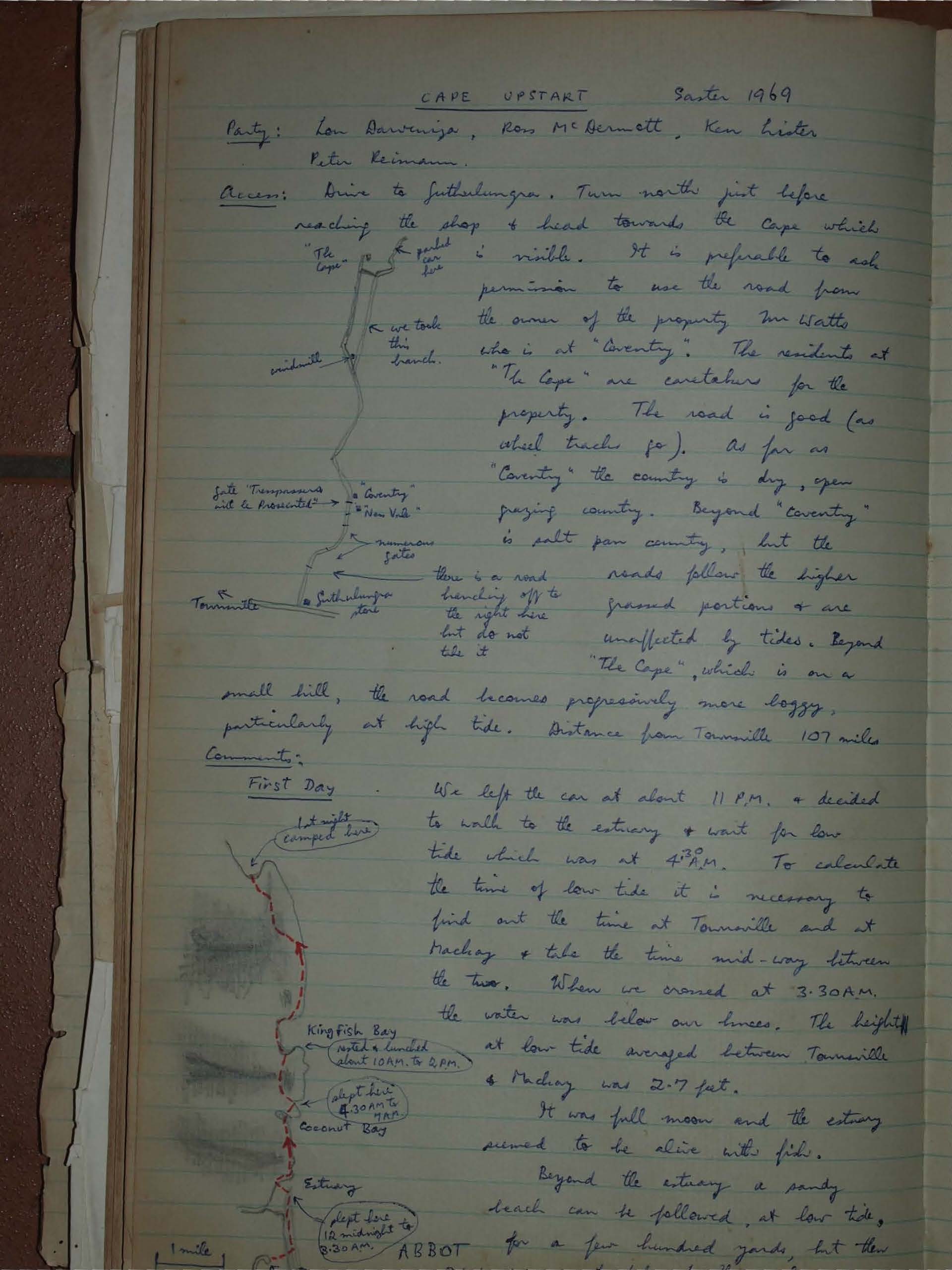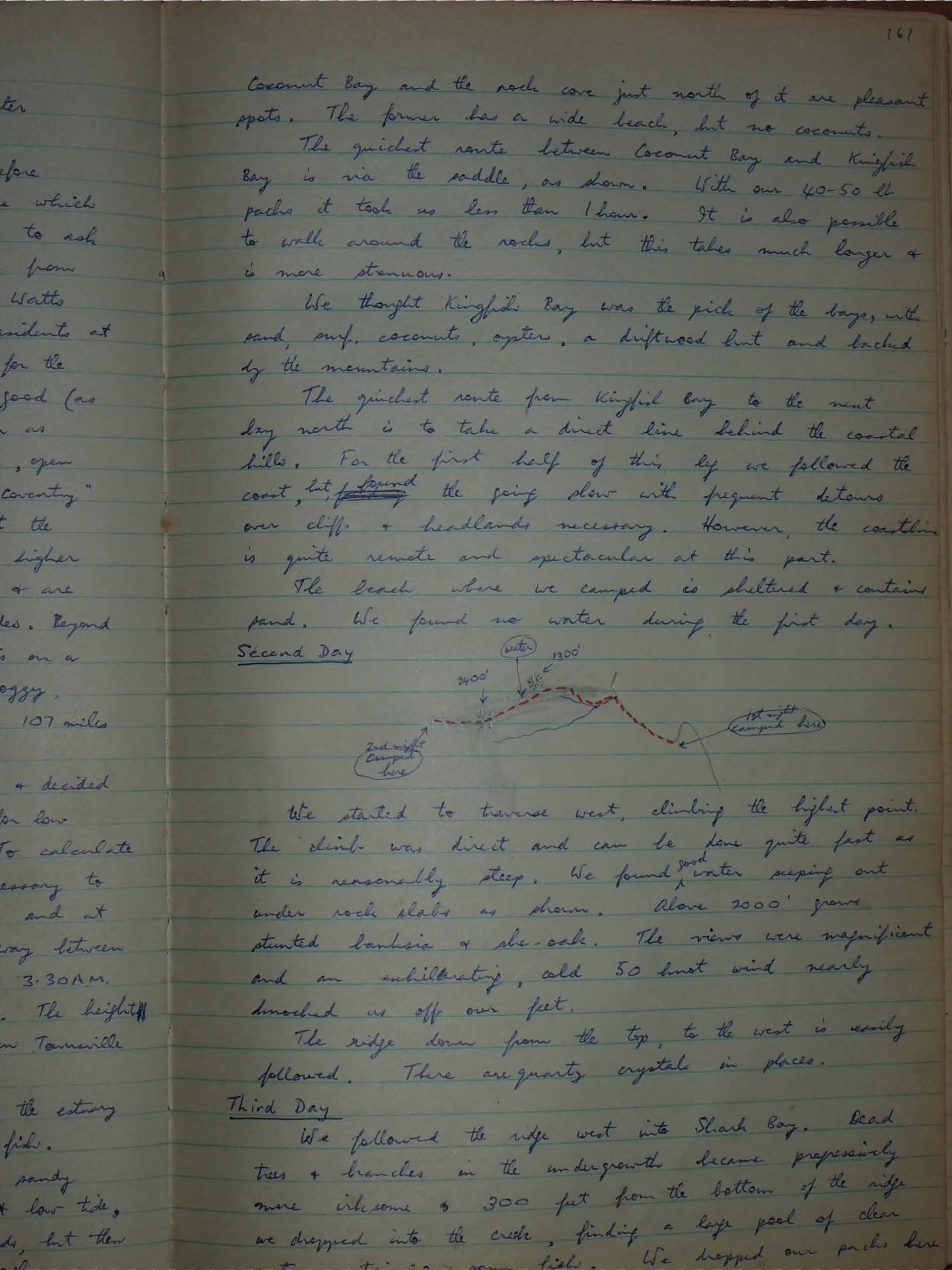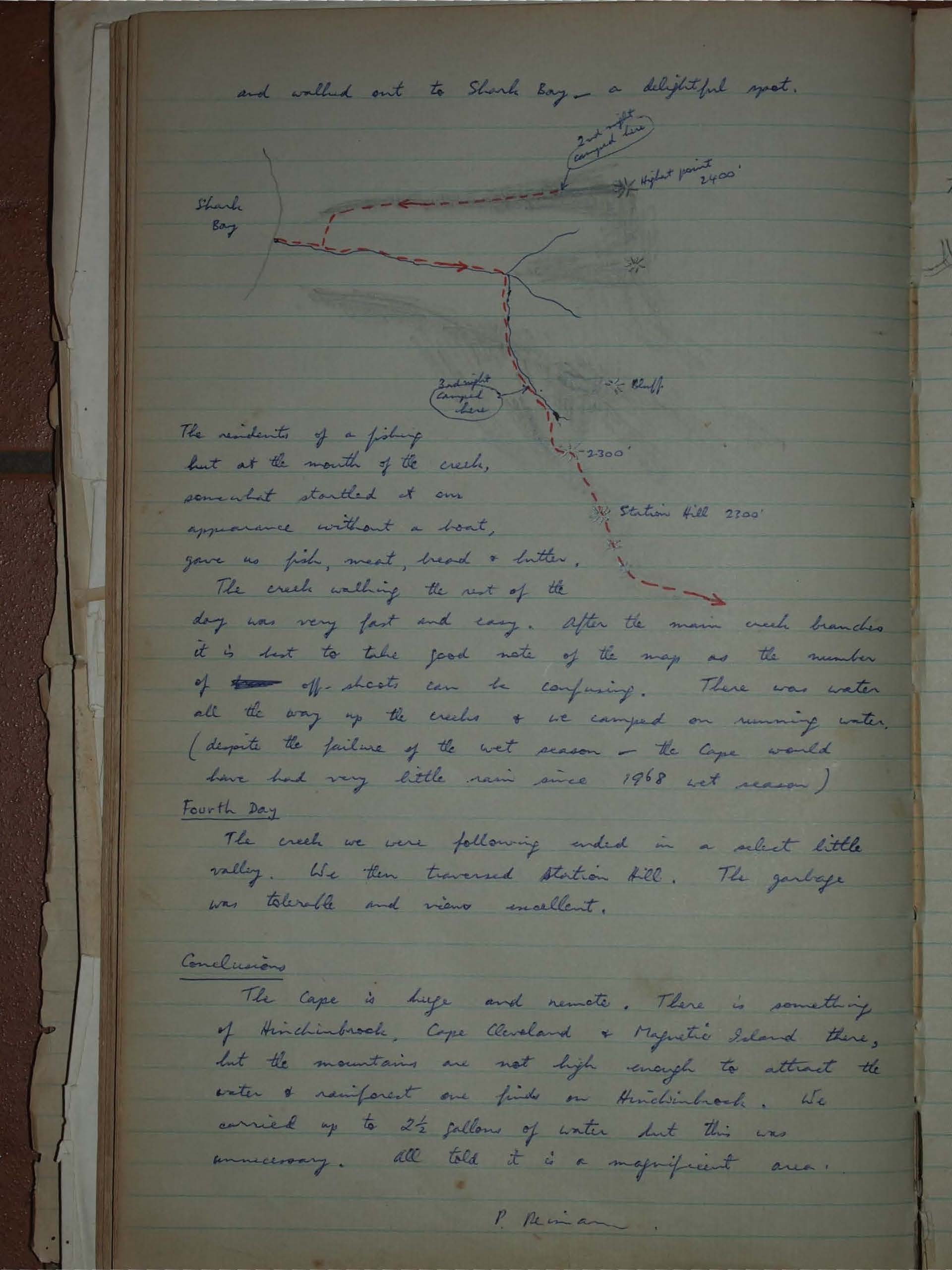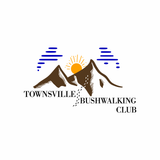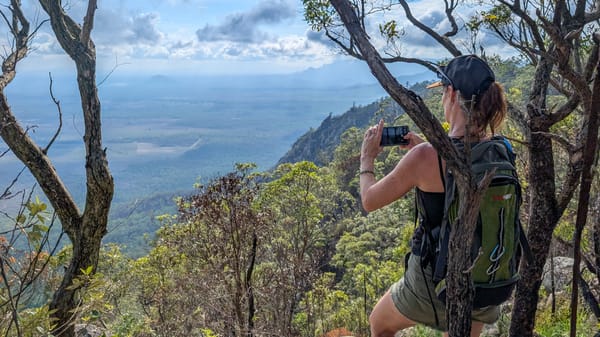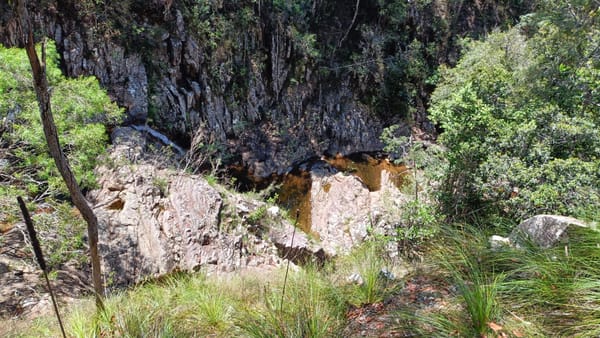Cape Upstart Easter 1969
Experience the remote beauty of Cape Upstart on this 1969 Easter trek. From moonlit estuary crossings to Coconut and Kingfish Bays, rugged climbs with sweeping views, quartz crystal ridges, and hidden freshwater creeks, this classic North Queensland hike offered wild, untouched adventure.
Party: Ron Aarenza, Ross McDermott, Ken Lister, Peter Reimann.
Access: Drive to Guthalungra. Turn north just before reaching the shop & head towards the Cape which is visible. It is preferable to ask permission to use the road from the owner of the property Mr Watts who is at "Coventry". The residents at "The Cape" are caretakers for the property. The road is good (as wheel tracks go). As far as "Coventry" the country is dry, open grazing country. Beyond "Coventry" is salt pan country, but the roads follow the higher grassed portions & are unaffected by tides. Beyond "The Cape", which is on a small hill, the road becomes progressively more boggy, particularly at high tide. Distance from Townsville 107 miles.
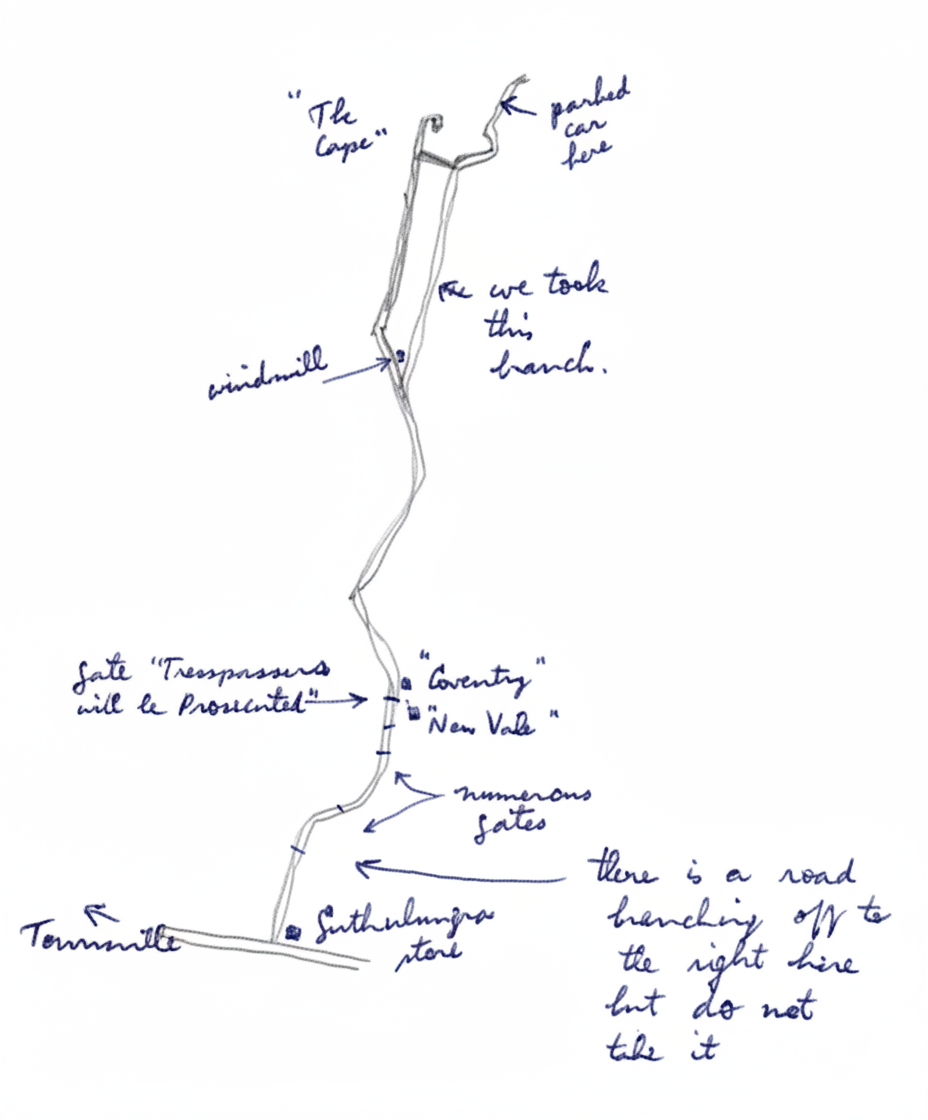
Comments:
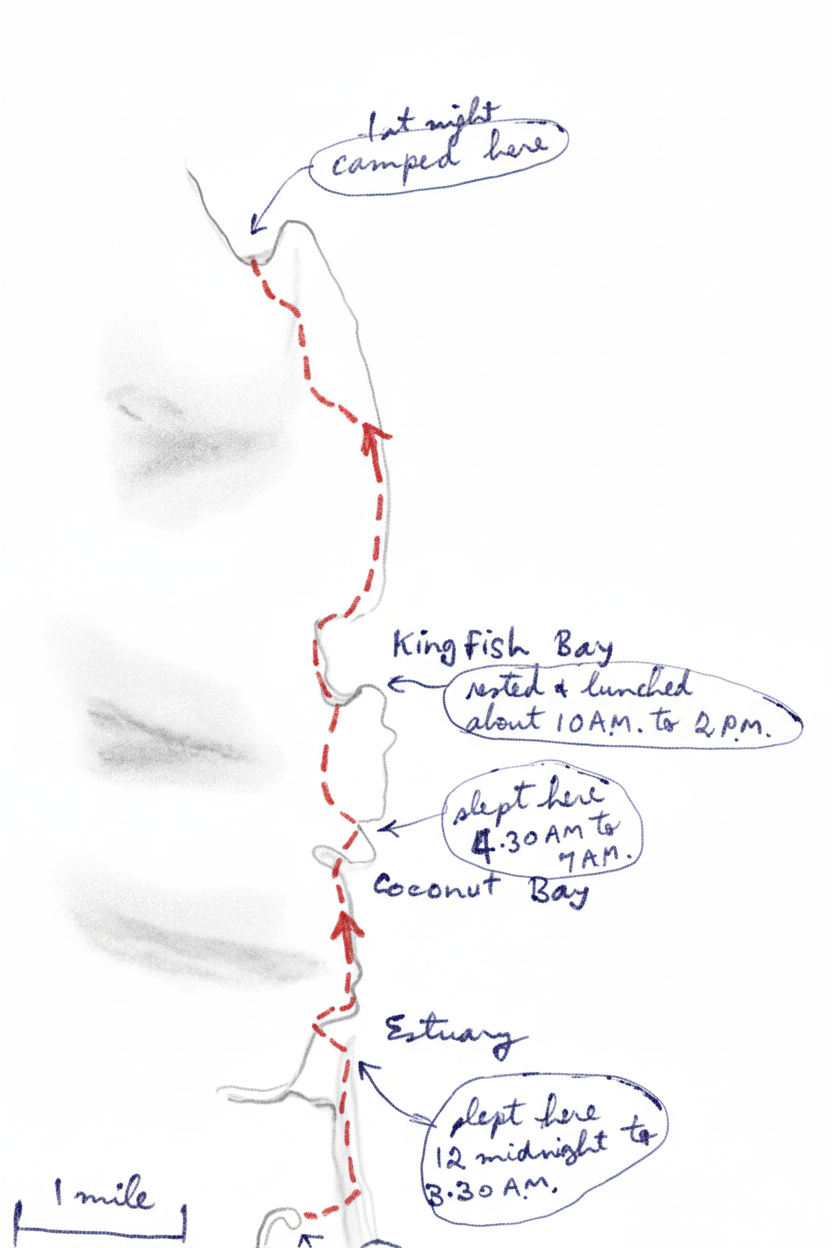
First Day
We left the car at about 11 P.M. & decided to walk to the estuary & wait for low tide which was at 4.00 A.M. To calculate the time of low tide it is necessary to find out the time at Townsville and at Mackay & take the time mid-way between the two. When we crossed at 3.30 A.M. the water was below our knees. The height at low tide averaged between Townsville & Mackay was 2.7 feet.
It was full moon and the estuary seemed to be alive with fish.
Beyond the estuary a sandy beach can be followed, at low tide, for a few hundred yards, but then ... TEXT CUT OFF ... Coconut Bay and the rock cove just north of it are pleasant spots. The former has a wide beach, but no coconuts.
The quickest route between Coconut Bay and Kingfish Bay is via the saddle, as shown. With our 40-50 lb packs it took us less than 1 hour. It is also possible to walk around the rocks, but this takes much longer & is more strenuous.
We thought Kingfish Bay was the pick of the bays, with sand, surf, coconuts, oysters, a driftwood hut and backed by the mountains.
The quickest route from Kingfish Bay north is to take a direct line behind the coastal hills. For the first half of this, by we followed the coast, but found the going slow with frequent detours over cliffs & headlands necessary. However, the coastline is quite remote and spectacular at this part.
The beach where we camped is sheltered & contains sand. We found no water during the first day.

Second Day
We started to traverse west, climbing the highest point. The climb was direct and can be done quite fast as it is reasonably steep. We found good water seeping out under rock slabs as shown. Above 2000' grows stunted lankisia & she-oak. The views were magnificent and an exhilarating, cold 50 knot wind nearly knocked us off our feet.
The ridge down from the top, to the west is easily followed. There are quartz crystals in places.
Third Day
We followed the ridge west into Shark Bay. Dead trees & branches in the undergrowth became progressively more irksome & 300 feet from the bottom of the ridge we dropped into the creek, finding a large pool of clear water. We dropped our packs here and walked out to Shark Bay — a delightful spot.
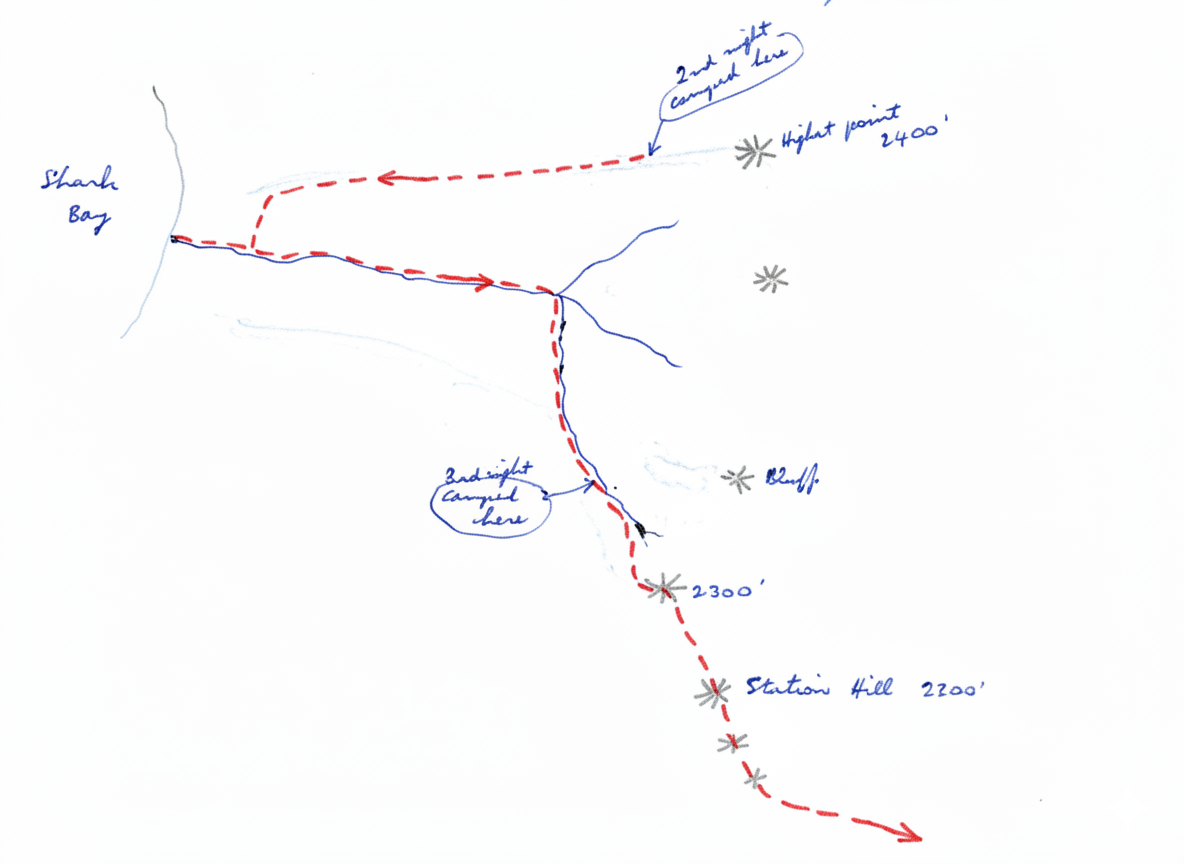
The residents of a fishing hut at the mouth of the creek, somewhat startled at our
appearance without a boat, gave us fish, meat, bread & butter.
The creek walking the rest of the day was very fast and easy. After the main creek branches it is best to take good note of the map as the number of off-shoots can be confusing. There was water all the way up the creeks & we camped on running water. (despite the failure of the wet season — the Cape would have had very little rain since 1968 wet season).
Fourth Day
The creek we were following ended in a silent little valley. We then traversed Station Hill. The going was tolerable and views excellent.
Conclusions
The Cape is huge and remote. There is something of Hinchinbrook, Cape Cleveland & Magnetic Island there, but the mountains are not high enough to attract the water & rainforest one finds on Hinchinbrook. We carried up to 2 1/2 gallons of water but this was unnecessary. All told it is a magnificent area.
P. Reiman
